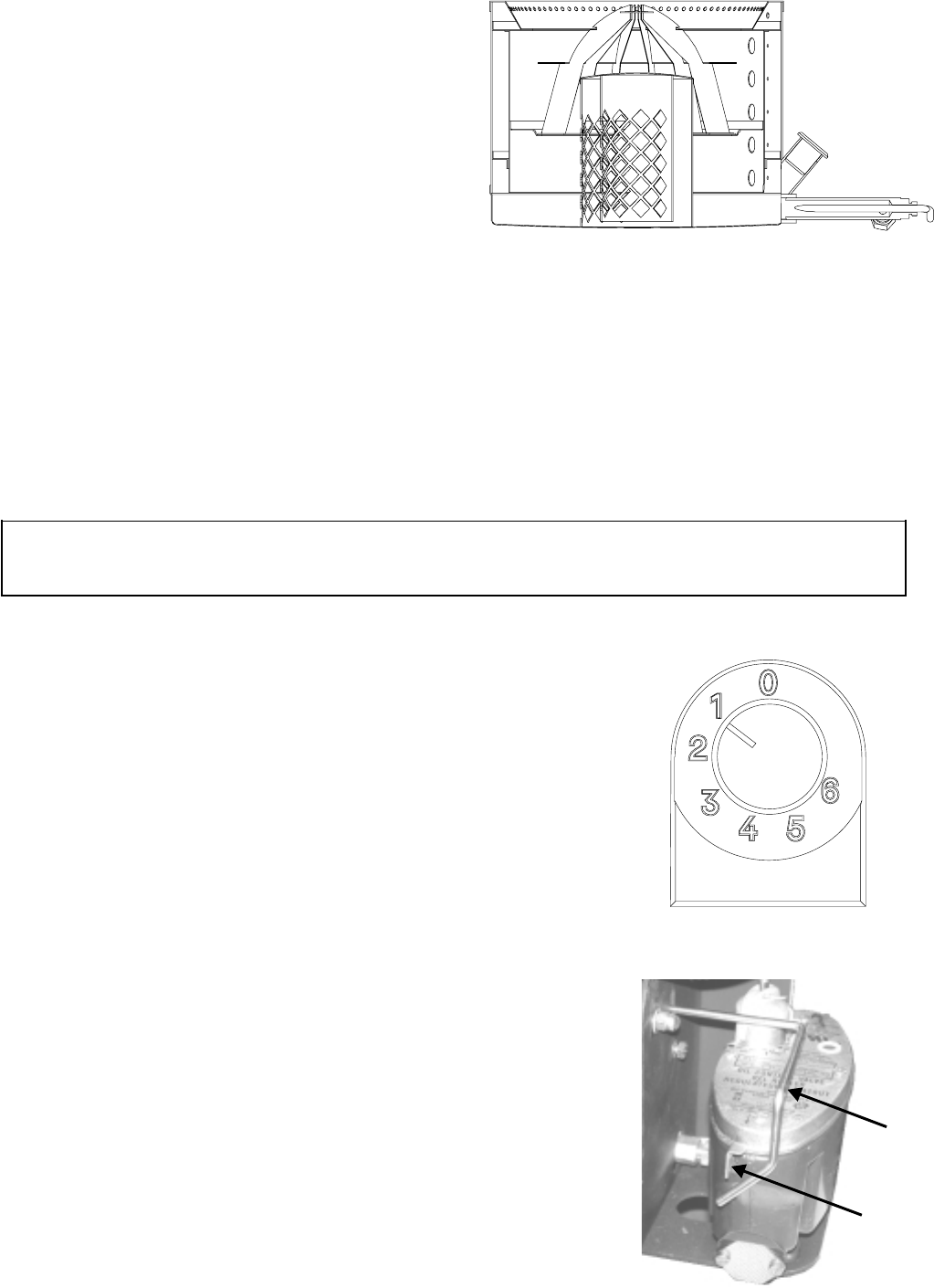
OPERATING INSTRUCTIONS
Understanding your oil stove
Furnace oil is fed from the tank to the burner floor (A) where is
it ignited by means of a firestarter. The heat produced by this
flame brings the burner temperature to the required level to
vaporize the fuel. Oil will only burn as a vapour not a liquid.
Room combustion air enters the burner through the air inlet
holes (B).
The stove carburetor contains a filter to trap impurities. This
filter must be cleaned periodically with the frequency
depending on the fuel purity. A safety lever controls fuel flow.
Oil can only enter the float chamber when the safety lever is
depressed. Oil temperature variations will affect the oil flow
into the float chamber. A float in the chamber raises the fuel
level available to the burner. The carburetor is also controlled
by a control knob which turns from “0" (off) to ”6" (high setting)
(fig. 16).
In the center of the burner is the catalyser (C) which aids the good combustion. When the stove is in operation, the
catalyser glows red. The stove should not be used with out both the catalyser, catalyser top (D) and ring (E).
To the right of the unit, just below the side panel is a small push rod called a de-scaling lever, (F), that should be pushed
and pulled in and out as well as turning slightly at the same time to keep the inlet pipe clear of carbon buildup. This should
be done on a weekly basis.
Because the draft from the chimney is never uniform, a draft regulator has been added to ensure a constant air intake to
the burner regardless of external factors.
When the door is opened, an automatic oil valve shut-off rod lifts the safety lever (B, figure17) and the stove shuts down
(A, figure17)
Never light the burner if any oil is in the burner pot. The burner pot must be cleaned thoroughly prior to lighting or
relighting.
Keep the door of the oil stove closed when it is in operation except during lighting procedures.
Proceed once installation is complete and all necessary instructions have been followed
When lit for the first time, the stove will emit a slight odour for a few hours. This is a normal temporary condition
caused by the curing and the “burn-in” of internal paints and lubricants used
in the manufacturing process and will not occur again. After extended periods
of non-operation such as following a vacation or a warm weather season, the
stove may emit a slight odour for a few hours. This is caused by dust particles
burning off. In both cases, open a window to sufficiently ventilate the room.
Lighting instructions
1.
Through the open door, remove the catalyser components (C, D and E,
figure 15) from the burner.
2.
Ensure that the burner pot is dry, and clean with no oil remaining.
3.
Place a piece of thumb nail size firestarter gel (methane pellet or paraffin paper
or 2 tablespoons of methylated spirits) into the burner pot.
NEVER USE ALCOHOL OR GASOLINE AS A FIRESTARTER.
Light with a long taper or wadded piece of paper. Immediately replace the
catalyser components (figure 15). Ensure that the top is centred.
4.
Closed the door and set the control knob to “0" (figure 16). Depress safety lever
to allow oil flow into the carburetor (B, figure 17).
5.
Turn the carburetor control knob to the ”1" dial setting.
6.
Allow 10 to 15 minutes of low burn for the flames and chimney draft to stabilize.
The catalyser should glow red before changing to a higher setting.
7.
The stove may now be adjusted to the desired heat setting, usually between “2"
and ”4". Never switch straight from “1
”to
“6". A longer burner life will be achieved
if the control knob is moved one setting at a time leaving approx. 5 minutes
between settings.
If the fire goes out, return the carburetor control knob to the “0" setting. Let the
burner cool off completely before repeating the lighting procedure.
Clean out any
oil before relighting.
NEVER OPERATE THE STOVE WITH THE DOOR OPEN OR AJAR.
A
B
C
D
E
F
B
B
A
B
Figure 15
Figure 16
Figure 17
Document n° 1043-1 ~ 15/01/2002
10


















